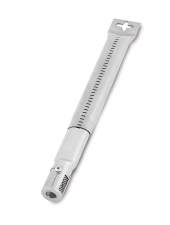
 2
2





 3
3




“It’s said war—war never changes. Men do, through the roads they walk. And this road—has reached its end.”
 3
3




 2
2




Just my 2 cents...
Money may not make people happy but it will get you all the warm fuzzy puppies you can cuddle and that makes most people happy.
 1
1




Some people age like fine wine. I aged like milk … sour and chunky.
 1
1




Jordan Holland wrote:I say if you've got the iron mass laying around, use it. It will be interesting to see how much difference it makes in the temperature. If it doesn't make a difference, you can always take them off. I'm curious why the bricks are between the stove and rotors?





“It’s said war—war never changes. Men do, through the roads they walk. And this road—has reached its end.”




John Daley Bendigo, Australia The Enemy of progress is the hope of a perfect plan
Benefits of rainfall collection https://permies.com/t/88043/benefits-rainfall-collection
GOOD DEBT/ BAD DEBT https://permies.com/t/179218/mortgages-good-debt-bad-debt





 1
1





|
See where your hand is? Not there. It's next to this tiny ad:
Learn Permaculture through a little hard work
https://wheaton-labs.com/bootcamp
|


